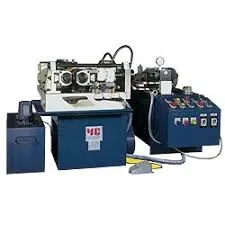
-
 Afrikaans
Afrikaans -
 Albanian
Albanian -
 Amharic
Amharic -
 Arabic
Arabic -
 Armenian
Armenian -
 Azerbaijani
Azerbaijani -
 Basque
Basque -
 Belarusian
Belarusian -
 Bengali
Bengali -
 Bosnian
Bosnian -
 Bulgarian
Bulgarian -
 Catalan
Catalan -
 Cebuano
Cebuano -
 Corsican
Corsican -
 Croatian
Croatian -
 Czech
Czech -
 Danish
Danish -
 Dutch
Dutch -
 English
English -
 Esperanto
Esperanto -
 Estonian
Estonian -
 Finnish
Finnish -
 French
French -
 Frisian
Frisian -
 Galician
Galician -
 Georgian
Georgian -
 German
German -
 Greek
Greek -
 Gujarati
Gujarati -
 Haitian Creole
Haitian Creole -
 hausa
hausa -
 hawaiian
hawaiian -
 Hebrew
Hebrew -
 Hindi
Hindi -
 Miao
Miao -
 Hungarian
Hungarian -
 Icelandic
Icelandic -
 igbo
igbo -
 Indonesian
Indonesian -
 irish
irish -
 Italian
Italian -
 Japanese
Japanese -
 Javanese
Javanese -
 Kannada
Kannada -
 kazakh
kazakh -
 Khmer
Khmer -
 Rwandese
Rwandese -
 Korean
Korean -
 Kurdish
Kurdish -
 Kyrgyz
Kyrgyz -
 Lao
Lao -
 Latin
Latin -
 Latvian
Latvian -
 Lithuanian
Lithuanian -
 Luxembourgish
Luxembourgish -
 Macedonian
Macedonian -
 Malgashi
Malgashi -
 Malay
Malay -
 Malayalam
Malayalam -
 Maltese
Maltese -
 Maori
Maori -
 Marathi
Marathi -
 Mongolian
Mongolian -
 Myanmar
Myanmar -
 Nepali
Nepali -
 Norwegian
Norwegian -
 Norwegian
Norwegian -
 Occitan
Occitan -
 Pashto
Pashto -
 Persian
Persian -
 Polish
Polish -
 Portuguese
Portuguese -
 Punjabi
Punjabi -
 Romanian
Romanian -
 Russian
Russian -
 Samoan
Samoan -
 Scottish Gaelic
Scottish Gaelic -
 Serbian
Serbian -
 Sesotho
Sesotho -
 Shona
Shona -
 Sindhi
Sindhi -
 Sinhala
Sinhala -
 Slovak
Slovak -
 Slovenian
Slovenian -
 Somali
Somali -
 Spanish
Spanish -
 Sundanese
Sundanese -
 Swahili
Swahili -
 Swedish
Swedish -
 Tagalog
Tagalog -
 Tajik
Tajik -
 Tamil
Tamil -
 Tatar
Tatar -
 Telugu
Telugu -
 Thai
Thai -
 Turkish
Turkish -
 Turkmen
Turkmen -
 Ukrainian
Ukrainian -
 Urdu
Urdu -
 Uighur
Uighur -
 Uzbek
Uzbek -
 Vietnamese
Vietnamese -
 Welsh
Welsh -
 Bantu
Bantu -
 Yiddish
Yiddish -
 Yoruba
Yoruba -
 Zulu
Zulu
Reinforced Bar Thread Rolling Equipment for Efficient Metal Processing Solutions
The Importance of Rebar Thread Rolling Machines in Construction
In recent years, the construction industry has been undergoing significant transformations, largely driven by advancements in technology. Among these innovations, the rebar thread rolling machine has emerged as a crucial tool for enhancing the efficiency and quality of construction projects. Threaded rebar, also known as rebar with threads, is a key component in various types of structure reinforcement, and the machines responsible for producing them are instrumental in shaping the future of construction.
Rebar, or reinforcing bar, is used extensively in concrete structures to provide tensile strength and improve durability. Traditionally, rebar was connected using lap splicing or welding, techniques that can be time-consuming and labor-intensive. However, with the advent of rebar thread rolling machines, the process of joining rebar has become simpler, quicker, and more resilient. These machines create longitudinal threads on the ends of rebars, allowing them to be interconnected quickly by means of couplers, which serve as connectors between two pieces of rebar.
The operational principle of rebar thread rolling machines is relatively straightforward yet effective. They utilize a cold forming process, which means that the rebar is shaped without the application of heat. This method not only helps maintain the integrity of the steel but also enhances the overall mechanical properties of the threads created. The threads produced are uniform and precise, which contributes to a stronger connection when two rebars are joined together. This uniformity is crucial for ensuring that the mechanical load is evenly distributed across the materials.
One of the major advantages of using rebar thread rolling machines is the significant time savings they offer. In construction, time is often a critical factor, and using threaded rebar connections can expedite the construction process. Studies have shown that the installation of threaded rebar can be completed up to three times faster than traditional methods like lap splicing. This acceleration translates to lower labor costs and increased productivity on job sites, making projects less expensive and more efficient.
rebar thread rolling machine

Moreover, the reliability and strength of the connections formed with threaded rebar surpass those of traditional methods. Couplers create a full-strength joint, which bears loads more effectively than overlapping bars, thereby minimizing the risk of structural failure. In areas prone to seismic activity, such as California and Japan, employing threaded rebar can enhance the safety and robustness of buildings.
The adoption of rebar thread rolling machines is also beneficial from an environmental perspective. Because these machines facilitate the reuse of rebar waste, they contribute to more sustainable construction practices. Excess rebar can be processed and repurposed, reducing the material waste generated during construction. This resourcefulness aligns with global initiatives aimed at reducing carbon footprints within the industry.
Despite their numerous advantages, the successful implementation of rebar thread rolling machines requires a certain level of expertise and training. Operators must understand how to set the machines correctly, monitor their performance, and ensure quality control for the threads produced. Therefore, companies investing in this technology should also consider training their workforce to maximize the benefits derived from these machines.
In conclusion, rebar thread rolling machines represent a pivotal advancement in the construction industry. They enhance the speed, quality, and sustainability of rebar connections, addressing many challenges faced by traditional methods. As construction projects become increasingly complex and demanding, the adoption of such innovative machinery will likely continue to rise, shaping a more efficient and safer future for infrastructure development. As we move forward, it is essential for industry stakeholders to embrace these technologies and invest in their capabilities, ensuring that construction remains resilient and adaptable in a rapidly changing world.
